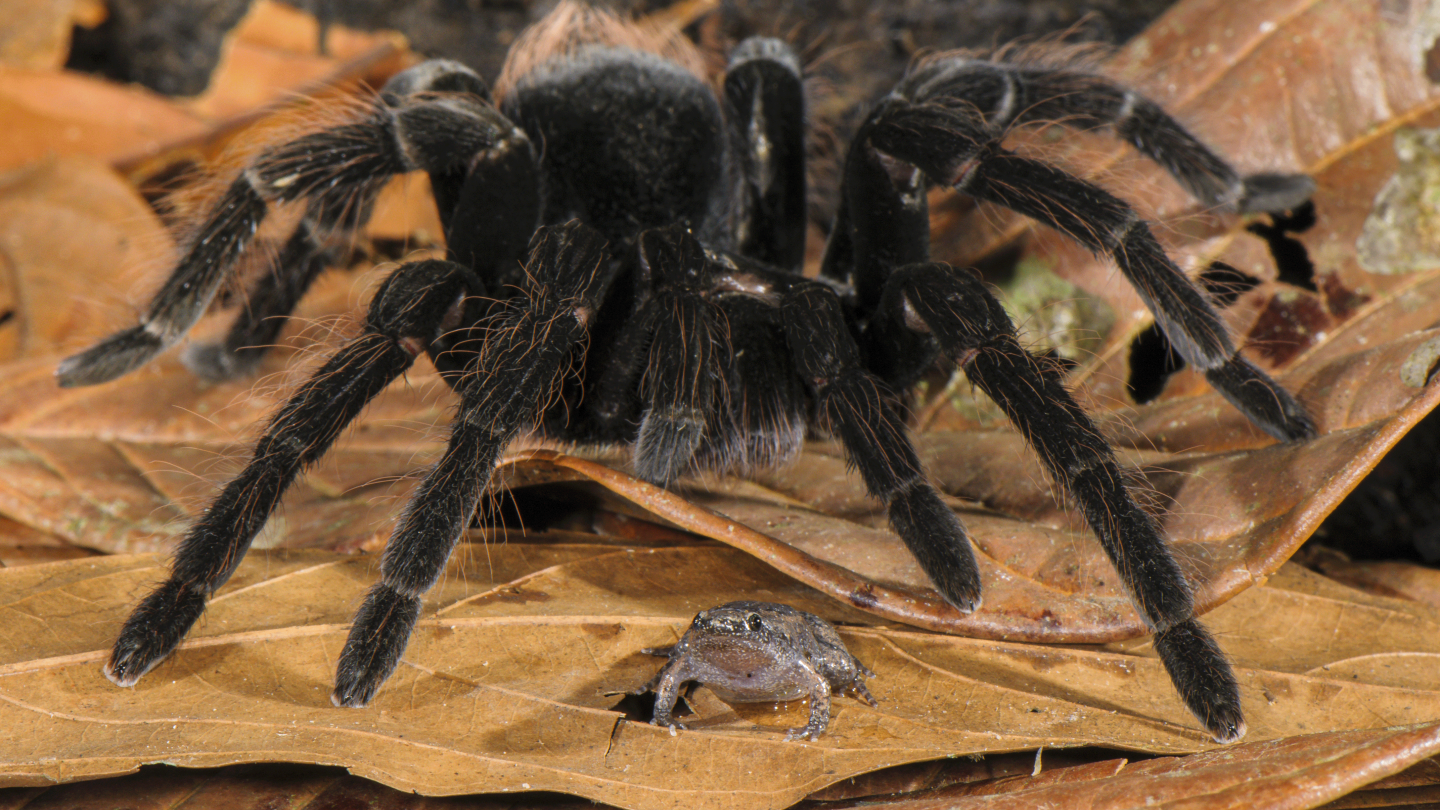Why are tarantulas hairy? Scientists finally have an answer!
Follow us on Google News (click on ☆)

Avicularia hirschii dangling from a leaf to escape predatory ants.
Credit: Emanuele Biggi
Their hair plays a crucial role: it prevents ants from biting and stinging them, a discovery that scientists attribute to a defensive evolution. This hypothesis is supported by the observation that tarantulas line their eggs with hair to protect them.
The researchers also found that some species of less hairy tarantulas have developed alternative strategies. For instance, Avicularia hirschii, a tree-dwelling species from Peru, evades ants by hanging at the edge of leaves, out of reach.
Tarantulas are not just solitary creatures; they also share their shelters with amphibians. These benefit from the protection offered by the spiders while keeping them free from harmful insects.
Thus, the image of the tarantula, often perceived as formidable, is nuanced. These spiders weave a complex web of relationships with other species.

Tarantulas maintain symbiotic relationships with other species, such as frogs that feed on harmful insects for them, according to researchers.
Credit: Francesco Tomasinelli & Emanuel Biggi
Tarantulas: spiders like no other
Tarantulas are large spiders belonging to the family Theraphosidae, known for their impressive appearance and behavior. They are distinguished by their robust bodies, covered in thick hair.
These spiders primarily inhabit tropical and subtropical regions, though some species also live in desert or temperate zones. Tarantulas are mostly nocturnal, hunting at night for insects, small mammals, or even other spiders.
Despite their intimidating appearance, tarantulas are actually not very dangerous to humans. Their bite, while painful, is rarely lethal, and their venom is generally less potent than that of other, smaller spiders. However, their size and lifestyle make them fascinating to observe, whether in their natural habitat or in captivity.
Tarantulas are also famous for their role in popular culture, often depicted as fearsome creatures, though their real behavior is often more reserved.